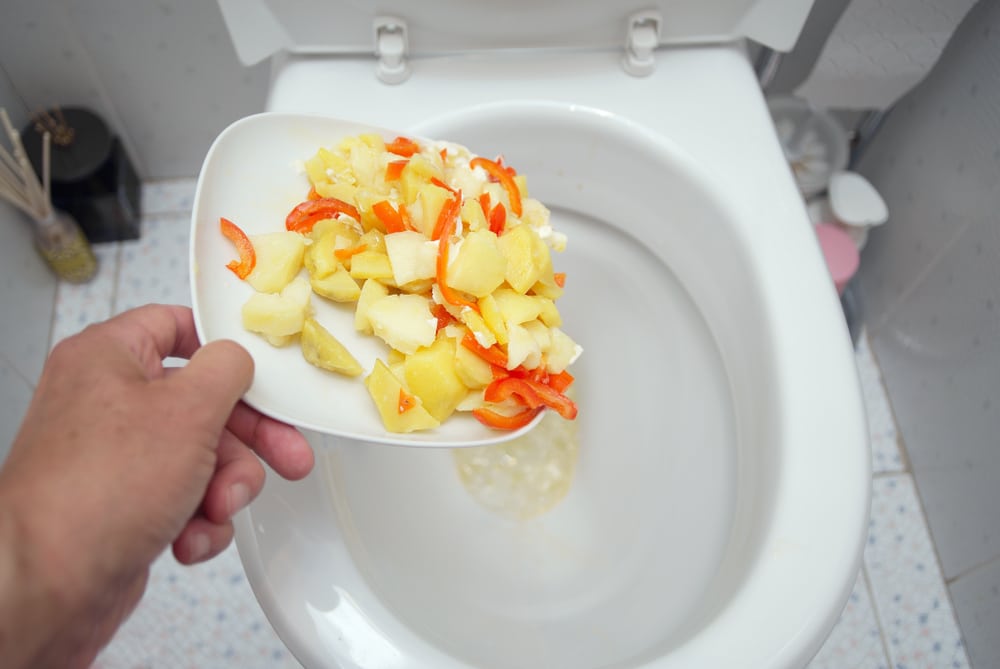Is it Rational to Dispose of Food in the Toilet?
Is it Rational to Dispose of Food in the Toilet?
Blog Article
Here further down you will find some awesome ideas about Flushing Food Down the Toilet?.

Intro
Many people are typically confronted with the dilemma of what to do with food waste, particularly when it comes to leftovers or scraps. One usual concern that arises is whether it's alright to flush food down the bathroom. In this article, we'll explore the reasons why people could think about purging food, the effects of doing so, and alternative techniques for proper disposal.
Reasons that individuals may take into consideration flushing food
Absence of awareness
Some people may not know the possible harm caused by purging food down the commode. They might mistakenly believe that it's a safe method.
Comfort
Flushing food down the bathroom may look like a fast and very easy remedy to throwing away undesirable scraps, specifically when there's no nearby garbage can available.
Laziness
In many cases, people may simply pick to flush food out of large negligence, without taking into consideration the consequences of their activities.
Consequences of flushing food down the toilet
Environmental effect
Food waste that winds up in waterways can contribute to pollution and damage aquatic communities. Additionally, the water utilized to flush food can stress water resources.
Plumbing problems
Purging food can bring about stopped up pipelines and drains pipes, causing expensive pipes repairs and troubles.
Sorts of food that should not be purged
Coarse foods
Foods with fibrous appearances such as celery or corn husks can obtain entangled in pipelines and cause clogs.
Starchy foods
Starchy foods like pasta and rice can take in water and swell, causing obstructions in pipelines.
Oils and fats
Greasy foods like bacon or cooking oils should never ever be purged down the toilet as they can solidify and cause blockages.
Correct disposal techniques for food waste
Utilizing a waste disposal unit
For homes furnished with waste disposal unit, food scraps can be ground up and flushed via the plumbing system. Nonetheless, not all foods appropriate for disposal in this way.
Recycling
Certain food product packaging products can be recycled, reducing waste and decreasing environmental effect.
Composting
Composting is an environment-friendly way to deal with food waste. Organic products can be composted and utilized to enrich soil for horticulture.
The importance of correct waste administration
Lowering environmental injury
Proper waste monitoring methods, such as composting and recycling, assistance minimize contamination and maintain natural deposits for future generations.
Shielding pipes systems
By staying clear of the technique of flushing food down the bathroom, home owners can avoid expensive pipes repair work and maintain the honesty of their plumbing systems.
Verdict
To conclude, while it might be alluring to purge food down the bathroom for convenience, it's important to understand the possible effects of this activity. By embracing appropriate waste monitoring techniques and throwing away food waste responsibly, people can contribute to healthier plumbing systems and a cleaner atmosphere for all.
FLUSH FOOD DOWN THE TOILET?
FLUSHING FOOD CAN CAUSE BLOCKED DRAINS IN YOUR HOME
All of the plumbing fixtures in your home are connected to the same sewer pipe outside of your home. This outdoor sewer pipe is responsible for transporting all the wastewater from your home to the Council sewer mains. Even small pieces of food that go down the kitchen sink can cause problems for your sewer. It should therefore be obvious that flushing larger bits of food, such as meat, risks a clog in either the toilet itself or the sewer pipes. Flushing greasy food is even more problematic because oil coagulates when it cools, coating the interior lining of your pipes.
THE TOILET IS NOT A BIN
Food isn’t the only thing that people shouldn’t be flushing down the toilet. People use the toilet to dispose of all kinds of things such as tampons, makeup wipes, dental floss, kitty litter and even underwear. Water goes to great lengths to educate residents about the high costs and stress placed on wastewater treatment systems simply from people flushing the wrong stuff down the toilet. It costs taxpayers millions of dollars each year, and homeowners thousands in blocked drain repairs.
FLUSHING FOOD IS A WASTE OF WATER
Flushing food is a waste of our most precious resource - water. In June this year Level 1 water restrictions were introduced to protect water supply from drought conditions. Much of New South Wales continues to be affected by prolonged drought with recent figures revealing up to 97 per cent of the state remains in drought. Depending on whether you have a single or dual flush toilet, every single flush uses between five and 11 litres of water. In the current climate this is a huge amount of water to be wasting on flushing food that should be placed in the bin (or better yet, the compost).
https://www.jabplumbingsolutions.com.au/blog/can-you-flush-food-down-the-toilet

As a serious reader about Is it safe to flush food (especially rice) down the toilet?, I imagined sharing that topic was worthwhile. If you liked our blog post please remember to pass it around. Thanks a lot for going through it.
Give Me A Quote! Report this page